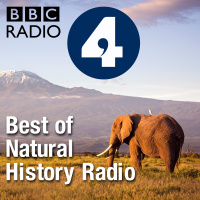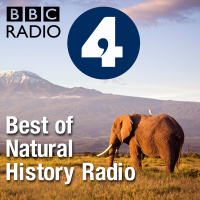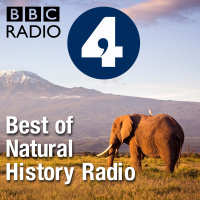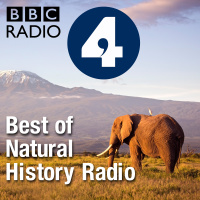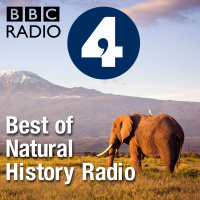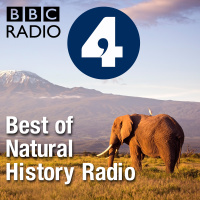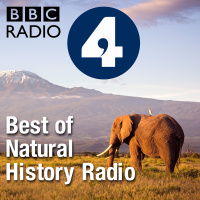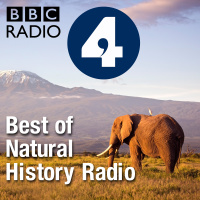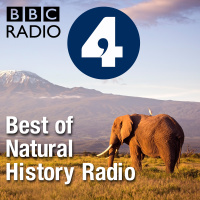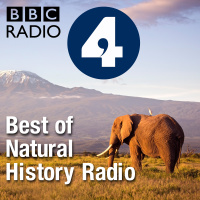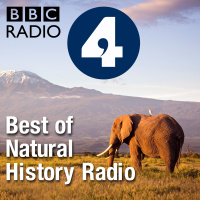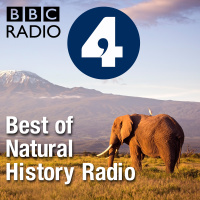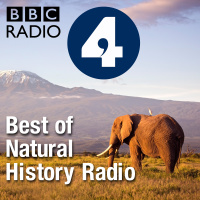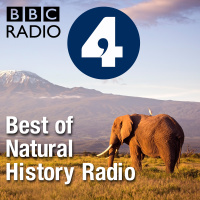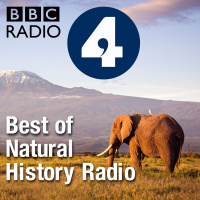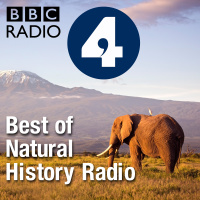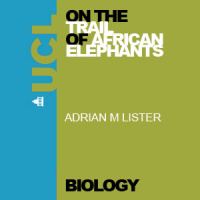Best Of Natural History Radio
- Autor: Vários
- Narrador: Vários
- Editora: Podcast
- Duração: 147:19:52
- Mais informações
Informações:
Sinopse
The BBC Natural History Unit produces a wide range of programmes that aim to immerse a listener in the wonder, surprise and importance that nature has to offer.
Episódios
-
Lindsey Chapman's Living World From the Archives - Underwater Architects
07/10/2018 Duração: 22minToday’s fashion for self-built homes may have started a few decades ago, but for nearly 200 million years, a family of insects have been quietly developing their own, des res. Depending on where you come from, they are sometimes known as ‘straw worms’, or ‘case worms’, but for most they are simply called ‘caddis’. The origin of the word "caddis" is unclear, but it seems to date back as far as Izaak Walton's 1653 book The Complete Angler, where the angling hero notes how to fish for roach or dace using "case-worms or cadis" as bait. There are almost 200 species of caddisfly in the UK, the largest of which is more than 3cm long. In this episode of Living World, Lionel Kelleway hopes to find just a few of this number when he is joined on Lake Windermere by caddisfly expert Ian Wallace, who attempts to guide Lionel through these curious pond, lake and river dwelling insects. Along the way they discover some of the intricate biology which leads to the creation of their self built homes, a process that has even bee
-
Lindsey Chapman's Living World From the Archives - The World's Largest Slug
30/09/2018 Duração: 22minIn this episode, Lindsey Chapman will bring this story up to date since this episode was first broadcast in 2008, offering some up to date thoughts on all things molluscan.It is not often on the Living World that the largest or biggest of any species is discovered. Yet in this episode Lionel Kelleway is in search of a large slimy creature. Though locally common across Britain's ancient woodlands, this slug is very much at home in the warm damp woodlands of Dartmoor and is the world’s largest ground slug, the “Ash-Black” slug. This mollusc is known to reach up to a length of 25 to 30 centimetres. Lurking under the bark of dead trees during the day, at night they slip obsequiously into the open looking for fungi of all kinds to eat. Guiding Lionel is renowned Dartmoor, naturalist John Walters who explains these large slugs are quite easy to identify by their characteristic dark edged sole, with a pale, ash coloured stripe running through the middle. Their presence is an important part of the ecosystems that kee
-
Lindsey Chapman's Living World From the Archives - Hen Harrier
23/09/2018 Duração: 22minGhosts of the Moor are how the pale grey male hen harrier is sometimes referred to as it glides seemingly without effort across an upland landscape. To find out more and to revel in actually seeing a hen harrier on the wing, in this episode Brett Westwood & lolo Williams are on the Berwyn Moors in Wales in search of this enigmatic bird of prey. lolo has brought Brett to this particular spot as since seeing his first hen harrier here as a young boy, lolo has returned every year to study their ecology and biology. As the duo watch harriers on the moor, lolo expands his understanding of how harriers utilise this unique man made habitat, especially in early spring when the males perform their spectacular "sky dances" to attract the female. Not everyone is as pleased to have hen harriers on their moorland so discussion falls to how rare in England & Scotland they are due to loss of habitat to conifer plantations or sheep, as well as conflict on grouse moors.In this episode, Lindsey Chapman will bring this
-
Lindsey Chapman's Living World From the Archives - Blackbirds
01/07/2018 Duração: 22minPossibly our most familiar songster,a blackbird singing high up on a rooftop is one of the real pleasures of living cheek by jowl with the natural world. These woodland edge members of the thrush family have over centuries become a garden specialist, enriching a morning walk or evening spent after work listening to the mellifluous tunes of the male blackbird. For this Living World nature presenter Lindsey Chapman relives the magic Lionel Kelleway discovered in the Hopetoun Estate near Edinburgh in Scotland.Beginning early in the morning, Lionel meets up with Will Cresswell a behavioural ecologist and discuss what is going on by this competitive singing between male blackbirds. In spring through to early summer, blackbirds can sing throughout the day and, which is not common in song birds, sing into the night. This energy sapping process is to proclaim their territorial rights to any other birds attempting to move in. Of course the song is only the beginning of the fascinating process of the breeding cycle and
-
Lindsey Chapman's Living World From the Archives - Woolston Eyes
24/06/2018 Duração: 22minOften we think of nature reserves are a product of preserving pristine or unique habitat for wildlife. Yet many nature reserves are products of reclaiming man made activity and letting nature take its course, with a little help. For this Living World wildlife presenter Lindsey Chapman relives the magic of a once industrial landscape which Lionel Kelleway explored in 2000.Lionel visits Woolston Eyes nature reserve near to Warrington where he meets up with Brian Martin who at the time of recording had been at the reserve for over 20 years recording the wildlife. This reserve is owned by the Manchester Ship Canal company and for years was used as a site to deposit dredging’s from the canal. Over the decades as Lionel discovered the site became a hotch potch of heaps and shallow areas which since 1980 when the site began the long process of conversion from the devastation of canal spoil into a wildlife haven, yet only a stone’s throw from the Warrington urban area. Along the way Lionel discovers some of the speci
-
Chris Packham celebrates Tweet of the Day
17/06/2018 Duração: 14minThe thought of spring without Springwatch on the BBC would be unthinkable, and Springwatch without it's erudite host Chris Packham likewise. Chris has also been a long time supporter of another BBC institution on Radio 4, Tweet of the Day, first presenting this series in 2013. What better then than for Chris to record especially for Tweet of the Day, a loose tie in with Springwatch, celebrating the birds that may be seen in Sherborne while the team were on air. But in this episode Chris also answers some more searching questions, such as who from the world of natural history would he invite to dinner, with a surprising answer.You can hear Chris's episodes on the Radio 4 website along with a lot more thoughts of all things avian via the Tweet of the Week pages.
-
Lindsey Chapman's Living World From the Archives - Catch the Pigeon
17/06/2018 Duração: 22minThe humble pigeon is an often overlooked bird. We pass by it often without a second glance as we rush along our busy city streets, but if we stop and wonder, how does the pigeon know where it is and how does it get from A to B?This episode from 2008 finds Lionel Kelleway discovering the biology behind pigeon migration with Oxford University's Chris Armstrong. Starting their recording at the University's Wytham Field Station Lionel meets some of the pigeons used in the study which far from being small-brained birds show they have a wide array of navigational tools at their disposal...a magnetic sense...a sun compass...a keen sense of smell. By attaching miniature GPS loggers to pigeon's backs Chris hopes to find out how they navigate home, however as Lionel finds out for himself, many aspects of a birds amazing navigational ability is still to be unravelled. So what has happened in the last 10 years since the programme aired? Lindsey Chapman brings the story up to date by offering some recent discoveries into
-
Living World From the Archives - The Machair Of The Western Isles
10/06/2018 Duração: 22minThe machair is a unique coastal grassland, rich in wildflowers, that form one of the rarest habitats in Europe, and for this Living World wildlife presenter Lindsay Chapman relives the magic of this man made but fragile landscape which Brett Westwood experienced on this visit to South Harris in 2004.Brett meets up with Martin Scott from the RSPB who guides him across this sea washed habitat to discuss the special nature of botanically rich grasslands. This grassland is a result of many centuries of grazing by farm animals through the crofting system, the programme unearth how that grazing benefits not only the wild flowers, but the birdlife too. Along the way Brett discovers wonderful flora such as meadowsweet, silverweed and knapweed. But on a cold wet day their quest to find the great yellow bumblebee does prove problematic. This habitat is unique to western and northern Scotland and today faces considerable threats, from changes in the traditional crofting system to the introduction of hedgehogs and mink w
-
Living World from the Archives - Celtic Rainforest
25/03/2018 Duração: 22minHigh in the hills of the Snowdonia National Park in Wales, can be found a rare and fascinating habitat. We all know of the importance of the Tropical Rainforests, however these Celtic Rainforests are in a way even rarer, with Britain being home to most of the best preserved examples in the World. The Valley is changing and time could possibly be running out for these remarkable and sensitive habitats, which have been suffering from pollution and climate change since the dawn of the Industrial Age. Brett Westwood relives programmes from The Living World archives, this episode from 2011. Wales is home to a remarkable and rare forest. Paul Evans joins Ray Woods from Plantlife Cymru in Snowdonia.In an area where 200 days of rain each year is normal, Paul and Ray don their waterproofs and venture up the valley of the Rhaeadr Ddu, the Black Waterfall. The landscape in this valley is dominated by water, not only from the exceptional rainfall this area is known for, but from the river thundering along many rapids and
-
Living World from the Archives - The Celtic Rainforest
25/03/2018 Duração: 22minHigh in the hills of the Snowdonia National Park in Wales, can be found a rare and fascinating habitat. We all know of the importance of the Tropical Rainforests, however these Celtic Rainforests are in a way even rarer, with Britain being home to most of the best preserved examples in the World. The Valley is changing and time could possibly be running out for these remarkable and sensitive habitats, which have been suffering from pollution and climate change since the dawn of the Industrial Age. Brett Westwood relives programmes from The Living World archives, this episode from 2011. Wales is home to a remarkable and rare forest. Paul Evans joins Ray Woods from Plantlife Cymru in Snowdonia.In an area where 200 days of rain each year is normal, Paul and Ray don their waterproofs and venture up the valley of the Rhaeadr Ddu, the Black Waterfall. The landscape in this valley is dominated by water, not only from the exceptional rainfall this area is known for, but from the river thundering along many rapids and
-
Living World from the Archives - Essex Geese
18/03/2018 Duração: 21minAround 100,000 dark bellied brent geese head to Britain every winter to escape the extreme cold weather of their arctic breeding grounds in Russia. Britain is therefore an important wintering ground for these geese with many thousands heading to the Essex Marshes. But what brings them here and what are the management needs of this populated area of the South East coastal? To find out for himself, as Brett Westwood introduces in this Living World episode first broadcast in 2005, Peter France heads over to the Essex coastline in the company of ecologist Graeme Underwood from Essex University and Chris Tyas from the RSPB. Overlooking the wide marginal landscape wedged between the sea and the land they discuss mudflats and difference between marine and freshwater marshes. An ever changing landscape that requires specific management with all the challenges of creating the best habitat for all plants and animals here, including the thousands of dark bellied brent geese, in front of them.
-
Living World from the Archives - Essex Geese
18/03/2018 Duração: 21minAround 100,000 dark bellied brent geese head to Britain every winter to escape the extreme cold weather of their arctic breeding grounds in Russia. Britain is therefore an important wintering ground for these geese with many thousands heading to the Essex Marshes. But what brings them here and what are the management needs of this populated area of the South East coastal? To find out for himself, as Brett Westwood introduces in this Living World episode first broadcast in 2005, Peter France heads over to the Essex coastline in the company of ecologist Graeme Underwood from Essex University and Chris Tyas from the RSPB. Overlooking the wide marginal landscape wedged between the sea and the land they discuss mudflats and difference between marine and freshwater marshes. An ever changing landscape that requires specific management with all the challenges of creating the best habitat for all plants and animals here, including the thousands of dark bellied brent geese, in front of them.
-
Living World from the Archives - A Starling Eruption
11/03/2018 Duração: 21minThe famous evening murmuration, fantastic formations of huge flocks of starlings coming in to roost, brings hundreds of visitors to the levels each winter. But far fewer people see the spectacle of the dawn eruption when the starlings take off en masse to start their day foraging in the surrounding fields. Brett Westwood relives programmes from The Living World archives. This episode from 2014 sees Trai Anfield immerses herself in a starling spectacle many people have never seen. Each year the reedbeds of the Somerset Levels become the winter home for hundreds of thousands of starlings. Making their way from across the UK and Europe these birds have found a safe haven to roost with plenty of food nearby. Simon Clarke of Natural England talks Trai Anfield through the spectacle on Shapwick Heath. When it is all over and three quarters of a million starlings have departed for the day, thoughts turn to the reedbed and the effect the presence of so many birds has on their winter roost site and the animals they sha
-
Living World from the Archives - A Starling Eruption
11/03/2018 Duração: 21minThe famous evening murmuration, fantastic formations of huge flocks of starlings coming in to roost, brings hundreds of visitors to the levels each winter. But far fewer people see the spectacle of the dawn eruption when the starlings take off en masse to start their day foraging in the surrounding fields. Brett Westwood relives programmes from The Living World archives. This episode from 2014 sees Trai Anfield immerses herself in a starling spectacle many people have never seen. Each year the reedbeds of the Somerset Levels become the winter home for hundreds of thousands of starlings. Making their way from across the UK and Europe these birds have found a safe haven to roost with plenty of food nearby. Simon Clarke of Natural England talks Trai Anfield through the spectacle on Shapwick Heath. When it is all over and three quarters of a million starlings have departed for the day, thoughts turn to the reedbed and the effect the presence of so many birds has on their winter roost site and the animals they sha
-
Living World from the Archives - Snowdrops
04/03/2018 Duração: 21minThere are 19 species of the wild snowdrop in the world, all in the genus Galanthus. Wild snowdrops are found across much of Europe from Spain to the Caucasus , with Turkey being a hot spot for these 'milk flowers', but they are not found in Britain. What we think of as British wild snowdrops which herald the beginning of spring, are an introduced species or escapees from garden collections. Over the centuries gardeners have selected over 1000 distinct cultivars and that number is increasing every year. And so it takes a certain special kind of person to become a galanthophile, or a lover of snowdrops.Brett Westwood relives programmes from the Living World archives and in this episode from 2004 Brett himself travels to Somerset to explore the fascinating world of snowdrops with one such galanthophile Christine Skelmesdale. They start by discussing the snowdrop cultivars in Christine's garden before moving on to 'Snowdrop Valley' (or the more correctly called Avill Valley) on Exmoor. Christine explains the orig
-
Living World from the Archives - Mountain Hares
07/01/2018 Duração: 21minThe Mountain Hare, sometimes called the Arctic or Blue Hare, is a native of Scotland but to most people's surprise a colony also live in England. Brett Westwood relives programmes from The Living World archives. This episode from 2005 Sarah Pitt heads into a wintry Peak District with the late Derek Yaldon in search of mountain hares, one of the great relics of the ice age. Nestled into the hills and as white as white during the winter these animals are very at home straddling the Pennine Way. But how did they get here? To discover this Sarah Pitt is led by zoologist Derek Yalden deep into wintry moors to find these animals, and much to his surprise is given a special device by Sarah to enable him to see the hares at night, something he's never done before. So a double surprise. Hares by day and hares by night. It certainly seems from Sarah and Derek's encounter that the night time is the right time for Mountain Hares.
-
Living World from the Archives - Winter Ponds
31/12/2017 Duração: 22minBrett Westwood relives programmes from the Living World archives. This episode from 2012 sees Miranda Krestovnikoff with Jeremy Biggs then from Pond Conservation (now known as Freshwater Habitats Trust) for a special Living world devoted to the ponds of the New Forest. Jeremy has chosen these as some of the finest of their type because they are keep open by grazing ponies and deer, don't suffer from pollution from roads or agricultural run-off , and are some of the cleanest ponds in the United Kingdom. When they go pond-dipping , kneeling in muddy water in chest-waders, he proves it by finding some of our rarest plants and animals including the mud snail which thrives in shallow pools whose margins dry out in summer . Damselfly larvae prowl among the plants and there are even newts active in January , animals which have grown too slowly in the previous summer and are spending the winter as youngsters. Best of all, in the shallows of the pond are clumps of the year's first frogspawn, in mid -January. This pond
-
Living World from the Archives - Ancient Holly
24/12/2017 Duração: 21minBrett Westwood relives programmes from the Living World archives. In this episode from 2011 Joanna Pinnock travels up to the Stiperstone Hills of Shropshire where she meets up with Sara Bellis and Carl Pickup from the Shropshire Wildlife Trust at a remarkable site, The Hollies. Here high up on the windswept hills, Joanna encounters ancient holly trees, which could be as old as 400 years. Holly, naturally an understory tree of more developed woodland, is not suited to grow up here in the cold windy conditions. But how and why these trees came to be here is something of a mystery. It is thought these holly trees are a living link to a past age in this landscape, where lead mining was once common and over 2 centuries ago there were thousands of people eking a subsistence living up here. Possibly the hollies we seen now, gnarled and twisted though they are, are all that remains of a woodland which at one time covered all the hills around here. That woodland was subsequently cleared for whatever reason, leaving th
-
Living World from the Archives - Godwits
17/12/2017 Duração: 22minBlack-tailed godwits are an elegant long legged bird about the size of a pigeon. In the summer they are found in the arctic where the Icelandic race of this species then migrates to Britain to spend the winter in relatively warmer weather. For this week's Living World Brett Westwood relives programmes from the Living World archives with an episode from 2013 which sees Chris Sperring visit a private estate in Hampshire where 2000 black tailed godwit visit their flooded water meadows along the River Avon in winter. Here Chris is guided by Pete Potts from Operation Godwit.
-
Living World from the Archives - Sika Deer
22/10/2017 Duração: 21minBrett Westwood relives programmes from 50 years of the Living World archives. In this episode from 2009, Lionel Kelleway is in Dorset with Dr Anita Diaz from Bournemouth University, for the sika deer rut.Lionel heads to Purbeck in Dorset with Dr Anita Diaz to experience the sights and unusual sounds of sika at the start of the rutting season. Sika Deer are aliens to the UK but now are well established as part of the British landscape, though Purbeck has one of the larger concentrations. As the night draws in, the sika come off the salt marsh around Poole Harbour to graze the grasslands of Purbeck. This being the rutting season, the sika are noisily proclaiming their status, with a call once described as a mournful whale song across the English countryside.

